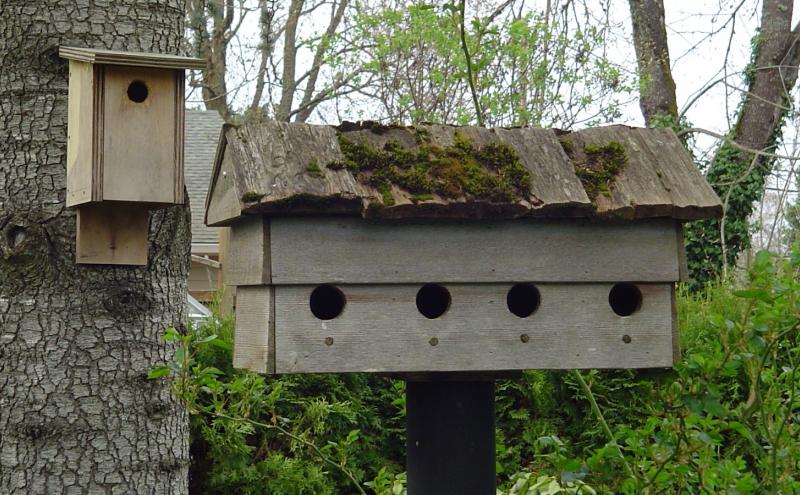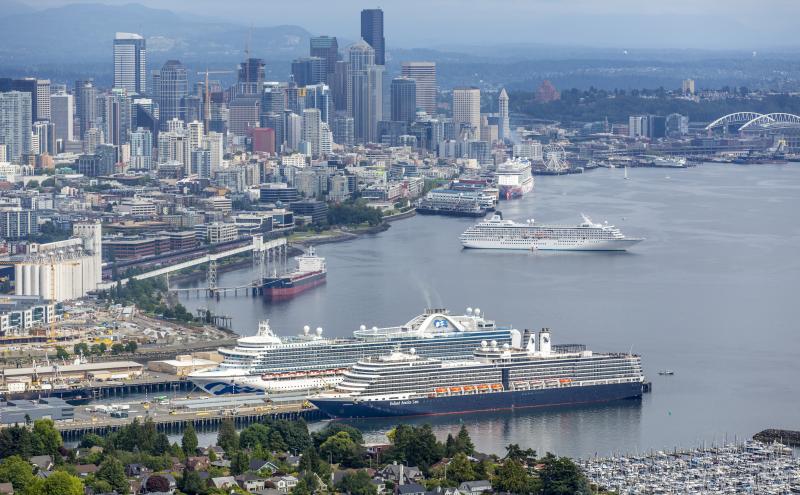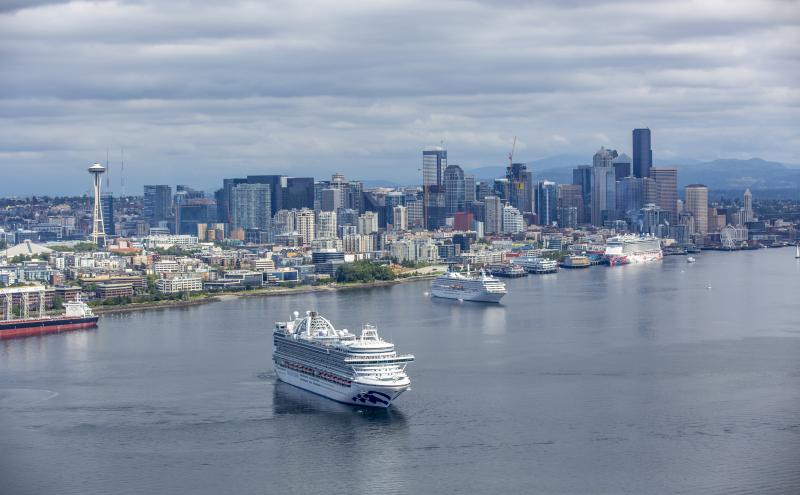
By Kendria Huff. Graduate Intern
Did you know the Port of Seattle is a landlord marine port? That means that the Port owns the wharves and waterfront properties that maritime industries operate from, and rents or leases properties to terminal operators and tenants. The Port also owns and operates Seattle-Tacoma International Airport (SEA). In addition to the Port’s major cruise terminals at Terminal 91 and Pier 66, and the grain terminal at Terminal 86, the Port also owns and leases out an extensive portfolio of waterfront and surrounding landside properties in Seattle managed by the Economic Development Division. These include over 80 buildings with industrial, retail, office and restaurant uses. At any given point the Port has over 200 lease agreements with tenants that range from renting a parking space on a terminal to long-term ground leases where the tenant has rights to develop and use the property.
Why are leases important?
If you have ever rented an apartment, the Port’s role as a landlord and relationship with its tenants is not all that different. An apartment renter doesn’t own the building or common spaces but has control and ownership over their furniture and activities inside the space. Because the Port is committed to protecting the environment, new leases will include a “green lease” provision to promote sustainable practices in tenant operations.
What is “green leasing”?
A “green lease” incorporates environmental and sustainability best practices into standard lease agreements. Green leasing goes beyond actions required by law to incorporate interventions or practices that reduce energy use, emissions, water, or waste in buildings or operations. As legally binding documents, incorporating green terms into leases holds the landlord and tenant responsible for meeting the terms and taking required environmental actions.
A green lease term can take many forms. Some terms help landlords pass the costs of investments in energy efficiency improvements to tenants, others require practices that improve environmental performance — such as recycling and high-efficiency lighting — and some mandate purchasing practices to require eco-friendly products or building materials.
Why is the Port developing green lease terms?
The Port’s Century Agenda sets an aggressive goal to be the greenest and most energy efficiency port in North America. And the 2020 Northwest Ports Clean Air Strategy builds on that vision to phase out seaport-related emissions by 2050. Green leasing can help the Port achieve these goals and is highlighted as a major strategy in Charting the Course to Zero: Port of Seattle’s Maritime Climate and Air Action Plan, to reduce greenhouse gasses (GHG) and air emissions across various sectors of maritime activity.
Incorporating green lease terms into Port leases can offer several benefits. Energy, water, and waste efficiency improvements can reduce operating costs and utility bills for tenants. The Port is also not the only one with sustainable ambitions; many of our tenants are also interested in maximizing their environmental performance and may have their own environmental goals.
Green buildings have become increasingly popular and marketable for commercial tenants. With the development of the Green Lease Leaders recognition program overseen by the Institute for Market Transformation and the U.S. Department of Energy, green lease terms have become more prominent. Property management groups are incorporating efficiency terms in commercial and residential properties. Seattle, being no stranger to environmental innovation, is one of the leading cities in implementing green leasing. It’s likely that on your commute to work or during weekend errands, you’ll encounter a building that is operating under green lease terms.
Has the Port done this before?
Green leasing at the Port isn’t an entirely new concept. SEA Airport uses green lease clauses and incorporates sustainability best practices into general rules and regulations for the airport. The Port’s waterfront properties operate in a different context from SEA, where space for restaurants and retail is highly competitive and sought-after. The Port also has experience working closely with tenants and customers to improve environmental performance, such as working with cruise lines to maximize shore power connections, installing high-efficiency lighting, and passing along grant and rebate opportunities.
How will the Port implement green leasing?
Currently, Port staff are focused on researching green lease terminology and developing a library of terms to fit the Port’s diverse property and lease types. Terms must carefully consider the different types of agreements and property functions. The Port also has to make sure its properties continue to be competitive in the larger Seattle market for commercial space for lease. All lease agreements undergo negotiations before being finalized. Terms may be revised or adapted, and not all agreements will include the same set of terms. The process will involve ongoing engagement with and technical assistance for our tenants.
Port staff are still in the early stages of this work but see green leasing as a critical step to achieving our environmental goals. If you want to stay informed about green leasing and other ways the Port is implementing the Maritime Climate and Air Action Plan and working toward its carbon reduction targets in maritime operations, drop the Environmental Team a line to join the mailing list.
Photo credit: "Lease Signed" by born1945 is licensed under CC BY 2.0









